With its incredibly tough skin, the honey badger remains a difficult prey for the Nile crocodile in Kruger National Park even after it is dead.
In the wild, the honey badger is known as one of the most tenacious and fearless animals. There have been numerous recorded instances of this species fighting against lions, hyenas, cheetahs, and venomous snakes without sustaining any serious injuries. This is part of the reason why the honey badger has earned the nickname “the badass.”
According to scientists, the reason the honey badger has such effective defensive capabilities is due to its thick, loose outer skin. This helps minimize the impact from external forces on vital internal organs such as bones, muscles, and organs. In fact, bee stings, porcupine quills, or bites from some other animals are difficult to penetrate this skin.
However, this does not mean that the honey badger is “immortal” in the wild. A strong lion, cheetah, or crocodile still has the ability to kill a honey badger if they are determined enough.
After hours of trying to tear apart the honey badger, the crocodile finally succeeded in its intent and devoured its prey.
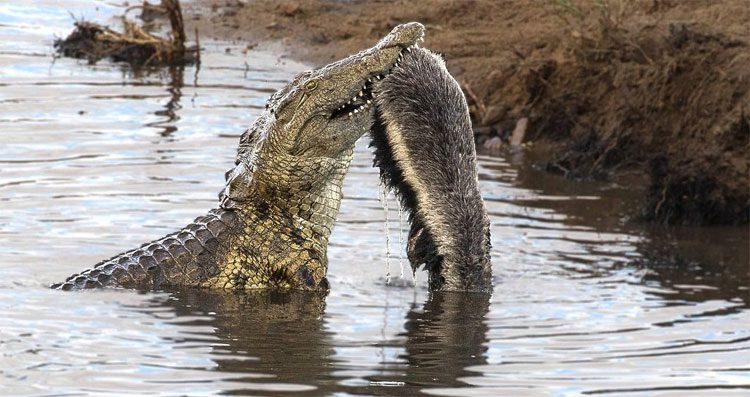
Crocodile gripping the honey badger’s body. (Photo: Sheila Grobbelaar).
Typically, crocodiles satisfy their hunger with fish, birds, frogs, and anything else they can easily find in the water. However, they certainly do not overlook larger prey that carelessly approaches the water’s edge. When the crocodile emerged, Grobbelaar clearly saw the prey in its jaws. “I was horrified to see the crocodile starting to toss a honey badger around. I really love honey badgers, so that sight was not pleasant at all,” Grobbelaar shared.
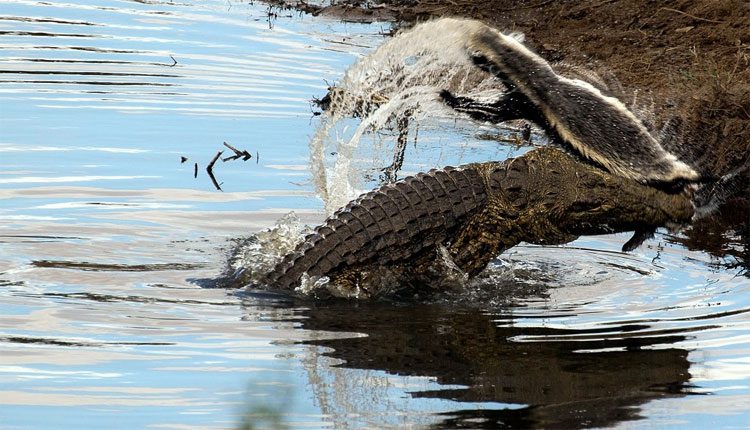
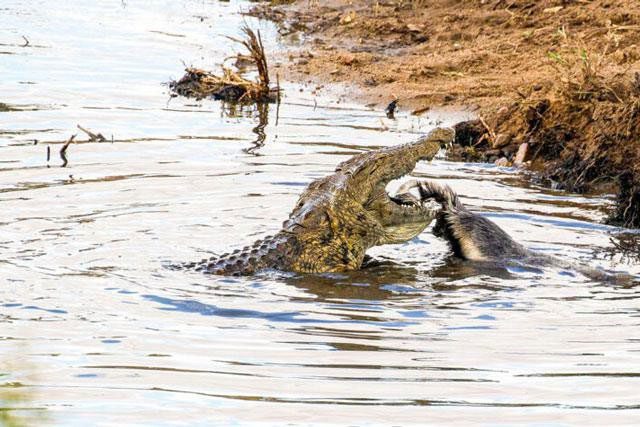
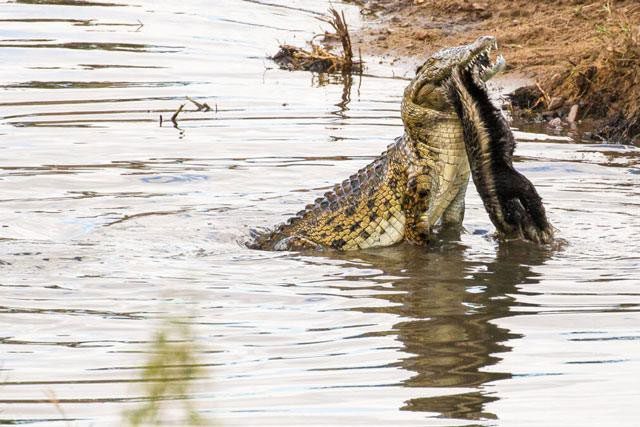
The crocodile attempting to toss the honey badger’s body on the water’s surface. (Photo: Sheila Grobbelaar).
Grobbelaar spent an hour observing and photographing the crocodile as it tossed the honey badger from side to side in an effort to tear the prey into smaller, more manageable pieces. When Grobbelaar returned to the waterhole about half an hour later, the crocodile had left the water and was crawling along the riverbank with the honey badger’s carcass.
The crocodile may have saved the meal to feast on the decaying body since it seemed relatively fresh. Nevertheless, it was still a challenging meal to swallow. “I suspect the reason the crocodile struggled so much with the honey badger’s carcass is that it found it difficult to tear the body into bite-sized pieces,” explained crocodile expert Dr. Xander Combrink. Crocodiles cannot chew their food, so they must break down the meat before swallowing and use stomach acid to digest their meal.
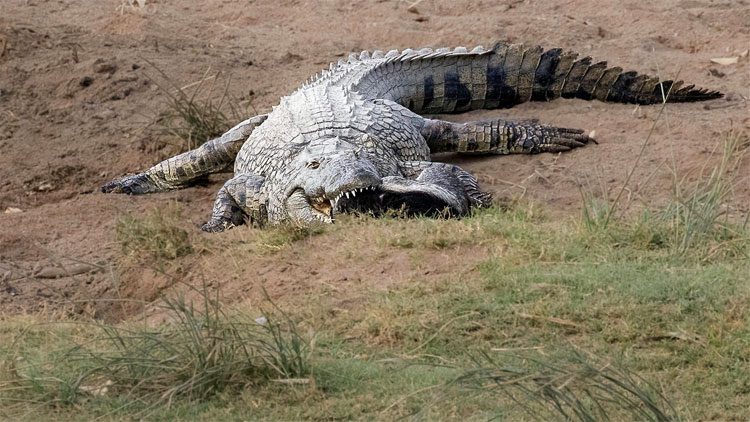
After a failed attempt to tear its prey, it continued to wrestle with the carcass on the shore. (Photo: Sheila Grobbelaar).
According to Dr. Combrink, the honey badger is famous for its extremely tough skin. The weight of the honey badger that was killed was too light to generate enough resistance needed for the crocodile to tear the prey by tossing it on the water’s surface.


















































